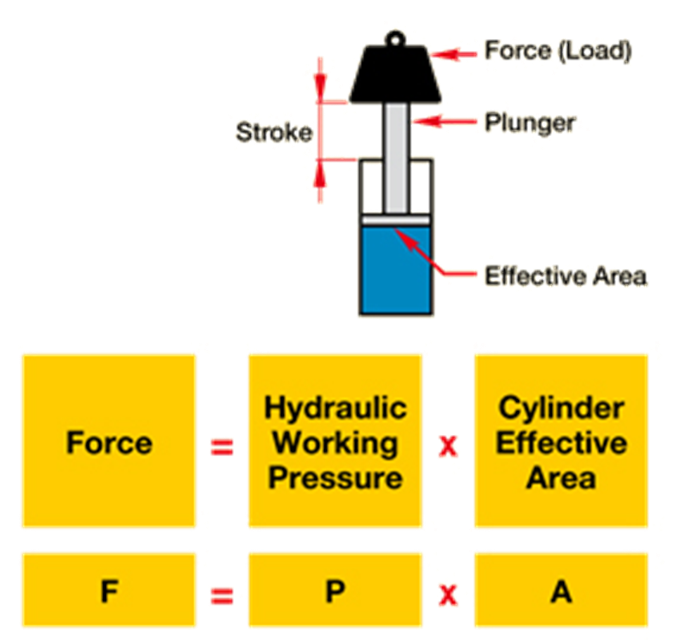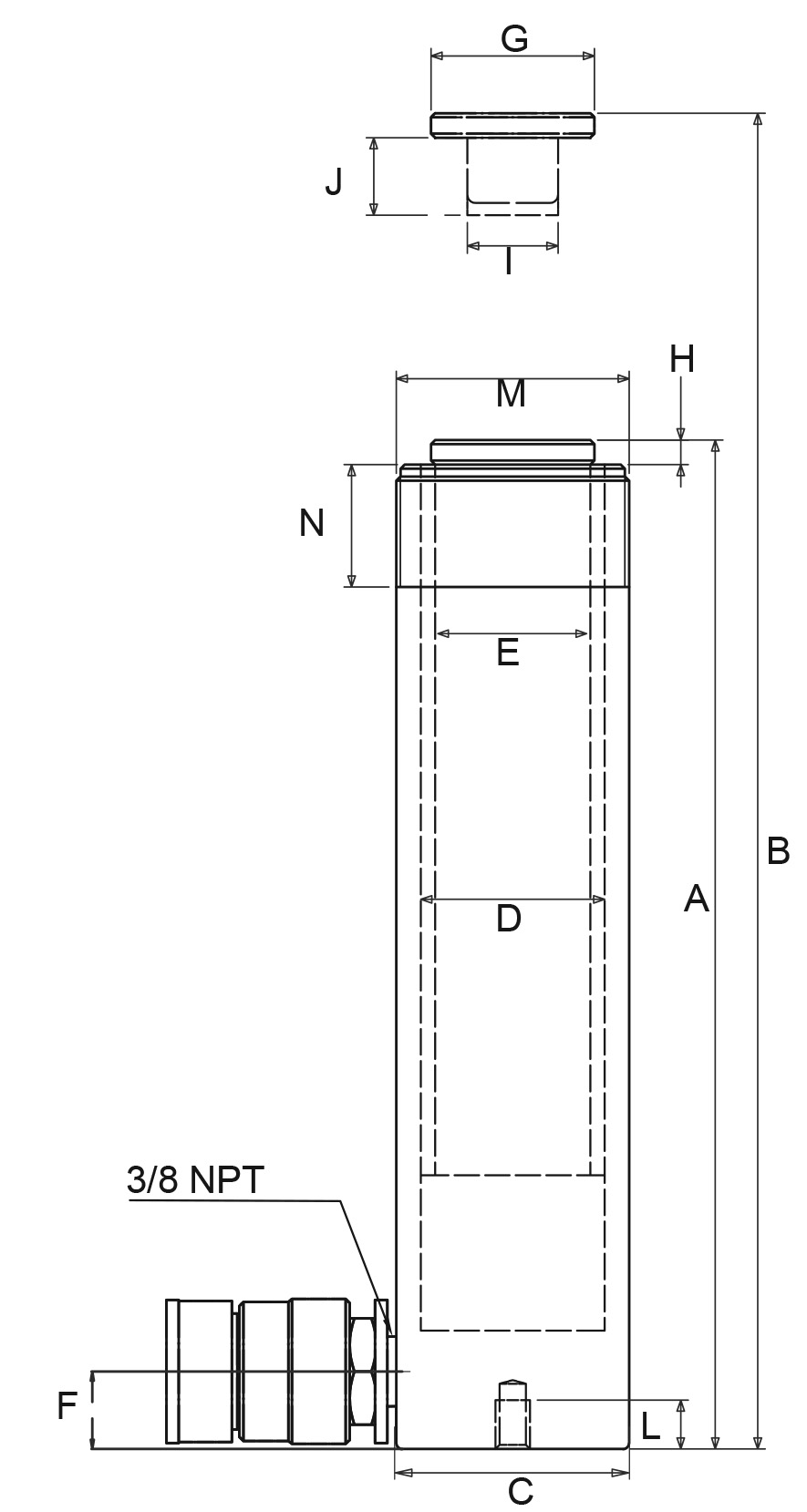Ever go into your tool chest and pull out a hydraulic cylinder and not know what size it is? It’s scratched up and you can’t read the cylinder label or worse yet, the manufacturer never stamped the cylinder with its capacity rating in the first place. (At PowerX International we laser etch cylinder capacity in every one of our hydraulic cylinders so you’ll never have that problem.) Or, have you been asked to repair a hydraulic cylinder, but you are not sure what you are looking at? Well, with a few simple calculations you should be able to discern what you are working with. “How is that?”, you may ask. Well, the answer is simple math! And better yet, all of the answers are sitting right there in front of you. Following these steps laid out in this article will help you figure out the cylinder tonnage (force) with confidence.
Using the F=PA Equation
Where F=force, P=pressure, and A=piston area, the F=PA equation is the tool to understanding exactly what size of a hydraulic cylinder you have. The equation requires at least two of the elements in order to solve for the third, so you can see how effective it is when you are looking for the force of a cylinder when you already know the surface area of the cylinder bore and the rated pressure of the cylinder. (See Illustration A) Simply, multiplying the area of the cylinder by the pressure will allow you to find out what kind of force, or lifting power, you have.

So, using the steps below, you can feel confident that you can calculate the force of any hydraulic cylinder.
Step 1: Know your pressure. For this example, we are going to use 10,000 psi, however, the steps below will work for any pressure.
Step 2: Calculating the cylinder’s force. This is the step where a little math is necessary. The reason hydraulic cylinders are able to lift so much weight is because of how liquid acts under pressure. Force is calculated by multiplying the pressure by the area of the piston. (F=PxA)
- Measure the diameter of the piston. Make sure you are measuring the actual piston (or bore) diameter and not the outside diameter of the cylinder. The cylinder will be larger than the piston, and your measurement will be incorrect. To measure the piston diameter, measure across the top of the cylinder where the rod extends out. This will give you the bore diameter. (Dimension “D” in Illustration B)

- Calculate the radius of the piston. Take the diameter of the piston and divide by 2 to get the radius. Next, square the radius (r2)
- Calculate the area of the piston. Area = π r2 so take the number from the previous equation and multiplying it by Pi (π ). Pi is the mathematical constant (3.14159265359…) and it is so long, your calculator simply has a pi button (π). If it doesn’t, just use 3.14 and you will be close enough.
- And finally, Calculate the force of the cylinder. Multiply the area by 10,000 psi (pressure capacity) then, divide by 2,000 to get the cylinder capacity in tons.
Calculating the Force of a Cylinder Example
Let’s say for the purpose of this example that the diameter of your piston is 2.56. First, divide by 2 and the radius is 1.28 inches. Once squared, it would be 1.638 inches squared. Multiply by π, and you get 5.1 inches squared. This is the area of the piston.
Going back to the example, since we are using a 10,000 psi cylinder, and the area of your piston is 4.9 in2, you would have 51,000 pounds of force. This is 25.5 tons of lifting force (to get tons, divide by 2,000).
So, it really is that easy to mathmatically figure out the tonnage of your 10,000 psi cylinder. You can also refer to our catalog to select the right hydraulic cylinder.
At PowerX International, we specialize in 10,000 psi (700 BAR) cylinders, hand pumps, air/hydraulic pumps and electric pumps. Contact PowerX at +1.414.988.6202 for all your high pressure hydraulic needs or for assistance selecting the right sized hydraulic cylinder for your lift application.
